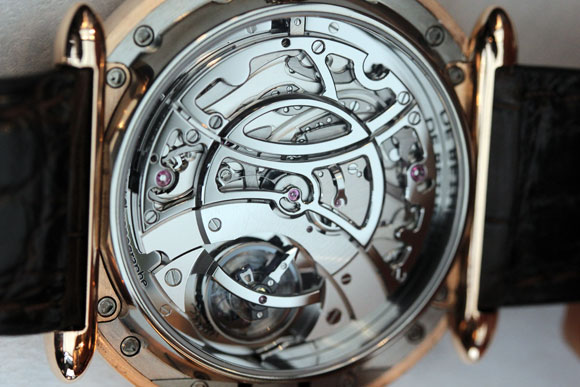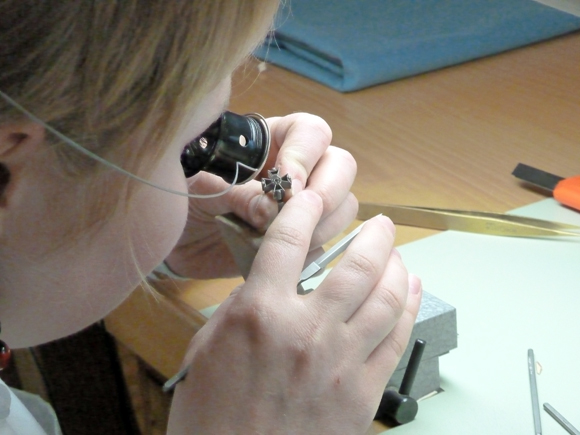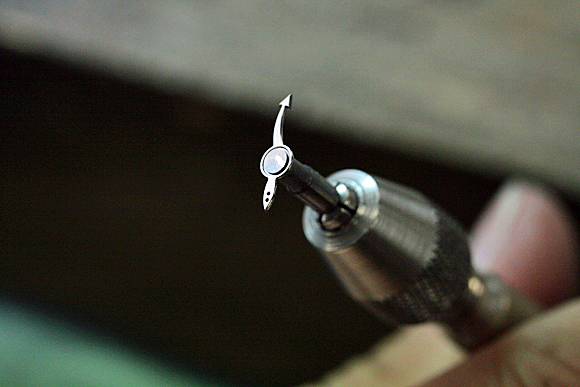In technical jargon, the term chamfering or bevelling refers to cutting down the sharp edges of watch components. It enables the light to play over the rims of the bridges, screws, plates, springs and cams of a movement. Thus accentuated by ever-changing slivers of light, the parts stand out and take on a nobler, more voluminous appearance.
The French term anglage is slightly ambiguous. On the one hand, it refers to the chamfering of the part, which consists of recutting a softer yet clean angle along the contours of the parts. Instead of 90 degrees with inevitably slightly jagged edges, the result is a smooth surface and a 45-degree angle. However, it is also used in relation to polishing this same surface in order to make it shine.
Like most watchmaking finishes in the domain of haute horlogerie, chamfering arose from a technical necessity. When parts emerge from machining, their edges are sharp and irregular. They are however assembled by hand, which has meant that to avoid watchmakers or other artisans cutting their fingers, the angles are traditionally softened, planed and neutralised.

Driven by the strong trend towards openworking and the considerable progress in the precision of the machine tools that make watch components, chamfering in the sense of planing down is now mostly done by machine. This saves time for the artisans working by hand and improves the finish of mid-range parts that would in any case not have been given a high-end polish.
Chamfering or bevelling in the sense of polishing is paradoxically very much in vogue. While one might be tempted to believe that machines have rendered such techniques obsolete, demand for movements decorated according to the finest standards is in fact constantly progressing. There is an important distinction here, since machine polishing of angles is fairly rudimentary. To achieve clearly visible, high-quality results, brands perform manual chamfering, meaning that the polishing tool is hand-guided. This may involve an electric lathe fitted with a polishing head, a buff covered with sandpaper, or even a hand-carved wooden peg. Sometimes two types of tool are used successively: one to do the roughing out, and the other to given added brilliance.

Once again, there are varying degrees of quality that are visible for those with a sharp eye. There is an instantly discernible difference between a beautiful polish and a mirror polish. Between a flat polish and a domed polish that is far harder to create, it is obvious which has required more time.
There is still however the much-debated topic of the angles. The points where the contours of the parts change direction are key to the overall appearance. They are called exterior angles when they form a pointed tip, and interior angles if they form a hollow. They are a traditional playground for chamferers because they impart a distinctive visual rhythm to the surfaces. It is possible to create interior angles by machines, but they lack luminosity and a slightly irregular touch. The technique consists of mounting very high up the part and tracing a deep and three-dimensional V shape on the surface so as to accentuate the geometry of an edge. There again, the difference is visible; there too, careful observation separates the wheat from the chaff, as well as good wheat from super high-grade wheat…









